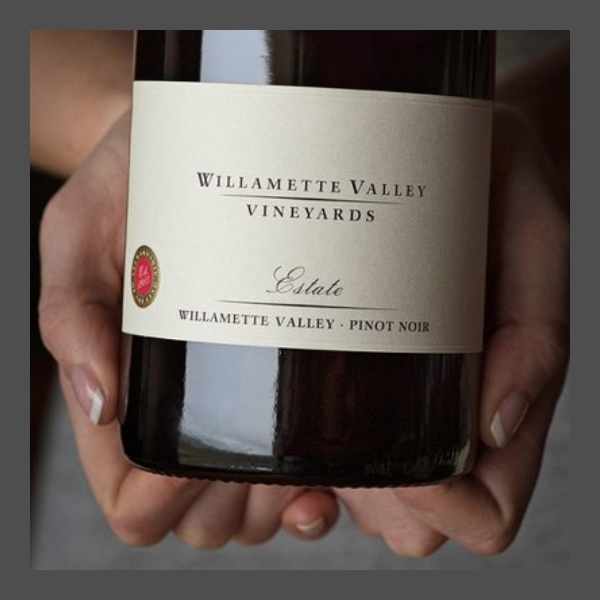Oregon's leading Pinot Noir producer, Willamette Valley Vineyards (NASDAQ: WVVI), has reported its financial results for the second quarter of 2024. Despite a slight decrease in sales revenue, the company saw a significant increase in net income.
Willamette Valley Vineyards reported a loss per common share after preferred dividends of £0.07 for the three months ended 30 June 2024, compared to £0.08 for the same period in 2023. This represents a decrease of £0.01 for the quarter.
Sales revenue for the period reached £10,332,358, a drop of 3.7% from £10,726,243 in the corresponding quarter of 2023. The decline in sales was primarily driven by a £597,059 reduction in sales through distributors, partially offset by a £203,174 increase in direct sales to consumers. The decrease in distributor sales was attributed to lower case sales in this market, while the rise in direct sales was a result of the opening of a new tasting room in late 2023.
Despite the lower sales, Willamette Valley Vineyards achieved a notable increase in gross profit margin. The gross profit margin for the second quarter of 2024 was 62.6% compared to 58.3% in the same period last year, an improvement of 4.3 percentage points. This positive change was largely attributed to higher prices charged for products compared to the second quarter of 2023.
Selling, general, and administrative expenses for the quarter were £5,934,784, a slight decrease of 0.1% compared to the previous year's figure of £5,941,739. This reduction was primarily due to a £11,872 decrease in selling and marketing expenses, partially offset by a £4,917 increase in general and administrative expenses.
Despite the decrease in sales revenue, net income for the second quarter of 2024 reached £195,978, a significant increase of 80.7% compared to £108,453 in the same period of 2023. This improvement in profitability was driven by the higher prices implemented for products sold during 2024.
Jim Bernau, Founder and CEO of Willamette Valley Vineyards, commented on the company's performance in the face of a dynamic market environment. "We are navigating a rapidly changing market influenced by interest rates, inflation, and evolving consumer trends," he stated. "Wholesalers and retailers are reducing their wine inventories and allocating shelf space to alternative alcoholic beverages. We are also seeing retailers prioritize contract house wine brands to maximise retail margins. To address these challenges, we are strengthening our direct consumer engagement through our ten locations, offering wine, culinary, and hospitality experiences, and enhancing our interaction with our diverse wine enthusiast ownership. We are confident these initiatives will positively impact our financial performance in both our wholesale and retail operations."
Detailed financial information and operational results for the second quarter are available in Willamette Valley Vineyards' Form 10-Q, filed with the United States Securities and Exchange Commission on EDGAR.
Willamette Valley Vineyards, Inc. is headquartered at its Estate Vineyard near Salem, Oregon. The company's common stock is traded on the NASDAQ Stock Market (WVVI).
This press release includes forward-looking statements within the meaning of Section 27A of the Securities Act of 1933, as amended, and Section 21E of the Securities Exchange Act of 1934, as amended. These statements involve risks and uncertainties that are based on current expectations, estimates, and projections about the company's business and beliefs and assumptions made by management. Such statements may be identified by words such as "expects," "anticipates," "intends," "plans," "believes," "seeks," "estimates," "predicts," "potential," "should," "will," or the negative thereof and variations of such words and similar expressions. Therefore, actual results may differ materially from those expressed or forecasted in such forward-looking statements due to numerous factors, including but not limited to: availability of financing for growth, availability of adequate supply of high-quality grapes, successful performance of internal operations, impact of competition, changes in wine broker or distributor relationships or performance, impact of potential adverse weather conditions, impact of reduction in grape quality or supply due to disease or smoke from forest fires, changes in consumer spending, the reduction in consumer demand for premium wines, and the revenues or costs for any of the company's tasting rooms and restaurants exceeding expectations. In addition, such statements could be affected by general industry and market conditions and growth rates, and general domestic economic conditions.
Many of these risks, as well as other risks that may have a material adverse impact on the company's operations and business, are identified in Item 1A "Risk Factors" in the company's Annual Report on Form 10-K.
Article
Business

Willamette Valley Vineyards Reports Q2 2024 Results: Sales Dip, Profits Rise

